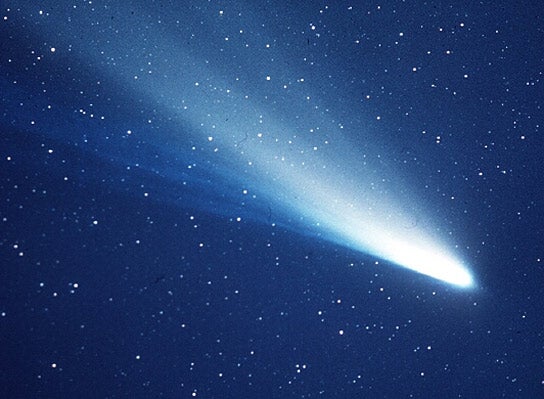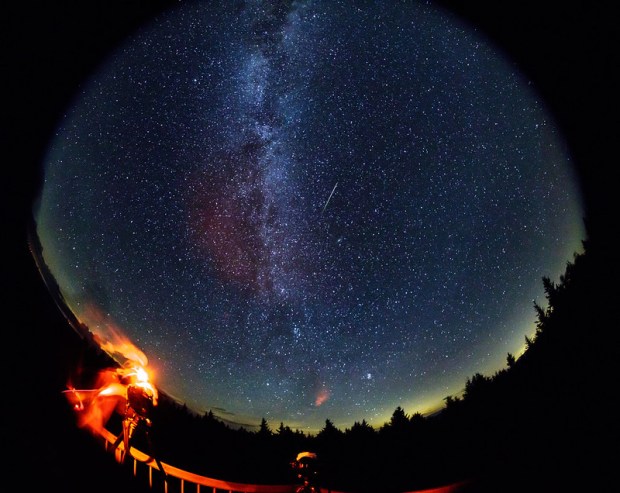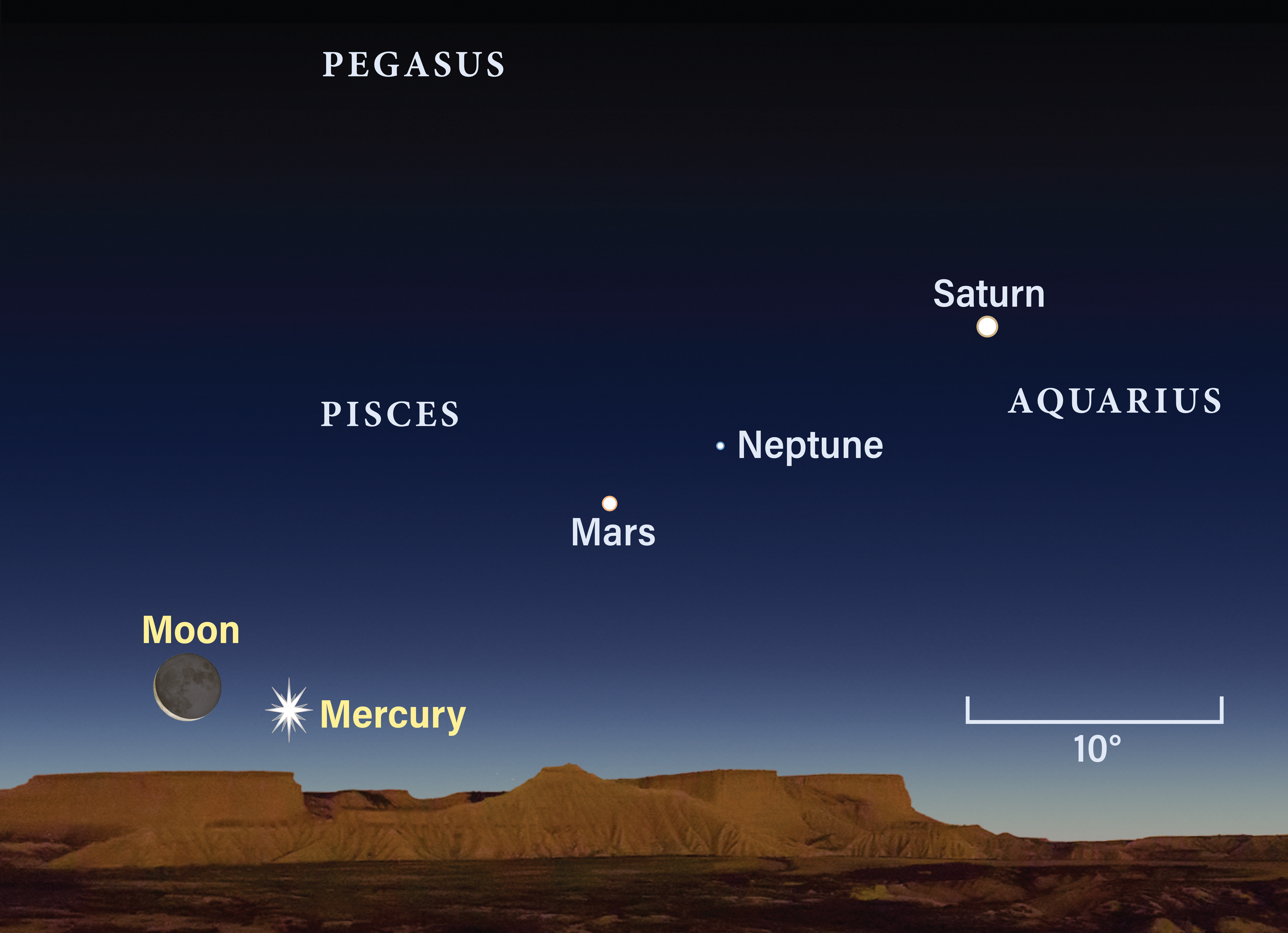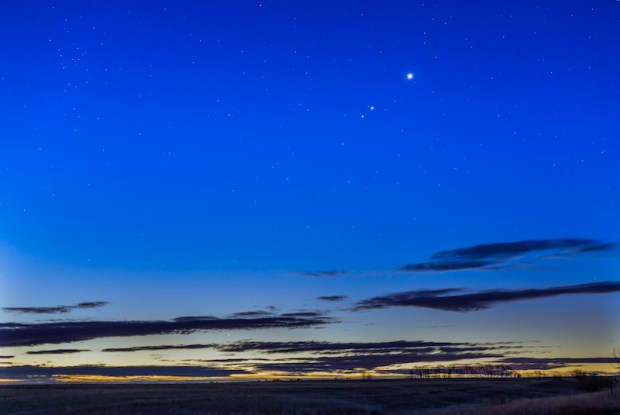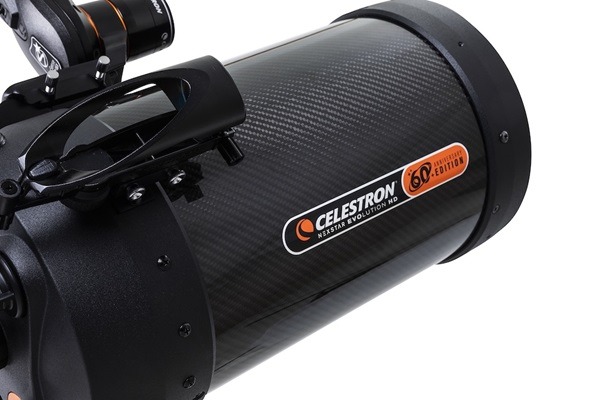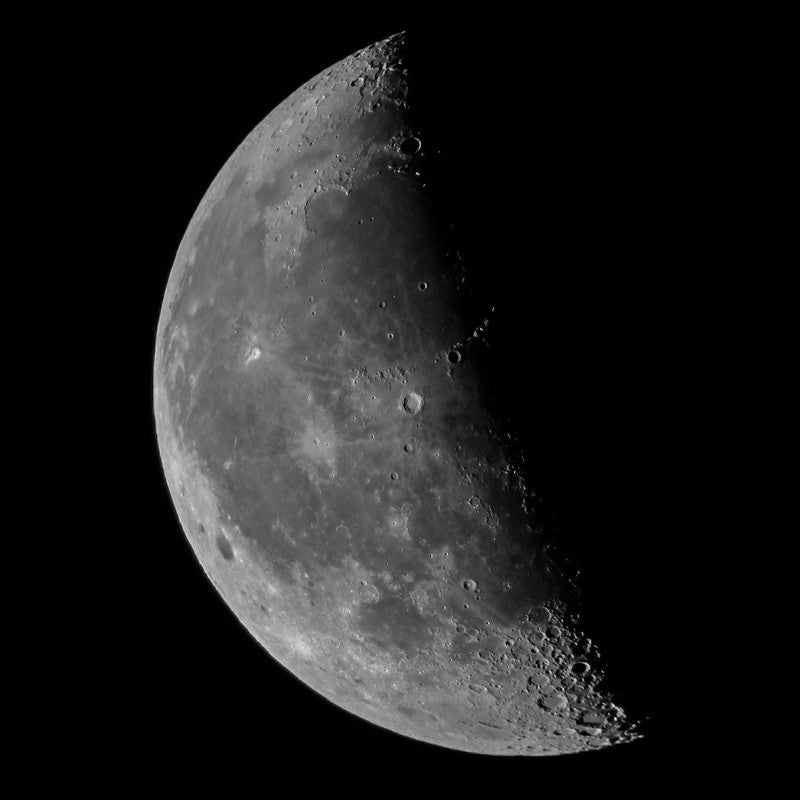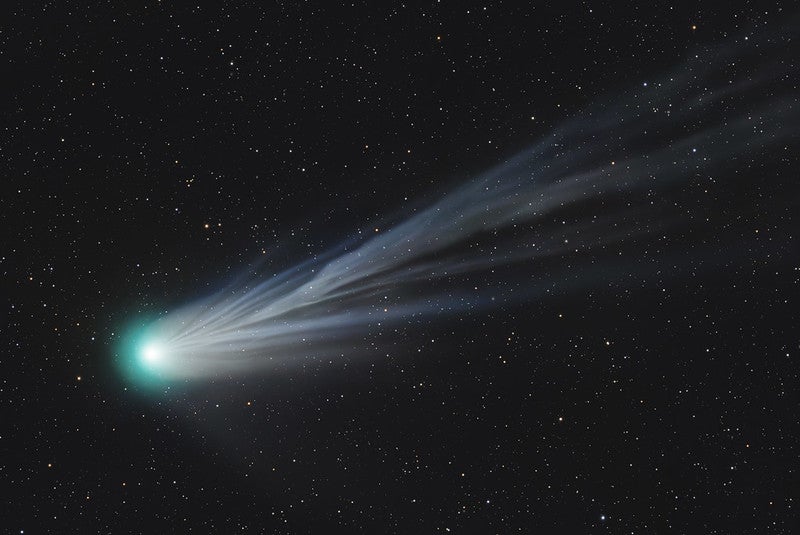
Friday, March 29
With a Moonless sky after sunset, tonight is a great time to target fainter deep-sky objects. After the sky grows fully dark, look north to find the Little Dipper, whose handle ends with the star Polaris, the North Star. To the dipper’s lower right is Draco the Dragon, a long, winding constellation that carries the so-called Splinter Galaxy (NGC 5907).
The name comes from the way this spiral is oriented with respect to Earth — NGC 5907 is nearly edge-on, which gives it a long, thin, needlelike appearance. You can find it 3° southwest of magnitude 3.3 Iota (ι) Draconis using binoculars or a telescope; the latter is best, as NGC 5907 glows at magnitude 10.3. The galaxy stretches nearly 12′ at its longest, but the size of your aperture will determine how much you see. NGC 5907 appears smaller and shorter through smaller (4-inch) scopes, while it stretches out farther in larger ones. This is because larger telescopes gather more light, showing off the fainter outer edges of the sidelong spiral.
Nearby is another edge-on galaxy: NGC 5866. This lenticular galaxy lies another 1.5° southwest from NGC 5907 and is roughly the same magnitude. NGC 5866 is also called the Spindle Galaxy, as it has a large, rounded bulge that lends to the appearance of its namesake. It stretches roughly 5′ long as its longest, making it more compact than NGC 5907 as well.
The Spindle Galaxy is the subject of some controversy, as it is unclear whether it is entered into Charles Messier’s catalog as M102, or whether that entry itself is a duplicate entry of its predecessor, M101.
Sunrise: 6:48 A.M.
Sunset: 7:22 P.M.
Moonrise: —
Moonset: 8:41 A.M.
Moon Phase: Waning gibbous (83%)
*Times for sunrise, sunset, moonrise, and moonset are given in local time from 40° N 90° W. The Moon’s illumination is given at 12 P.M. local time from the same location.
Saturday, March 30
Comet 12P/Pons-Brooks is fast approaching perihelion, the closest point to the Sun in its 71-year orbit. As it does, the comet is brightening and has been recently recorded just brighter than 5th magnitude. Tonight and tomorrow, it’s extra-easy to find, too, as it makes a close pass of Aries’ alpha star, Hamal.
Look west about an hour after sunset to start your search. At magnitude 2, Hamal is not particularly bright. But Jupiter, which shines at magnitude –2.1, lies just to Hamal’s upper left in the sky, about 14° from the star. Once you’re centered on Hamal, you’ll readily spot Pons-Brooks just ½° west of the star. Through your binoculars or telescope, you’ll surely see its round, fuzzy coma, and may even pick up a bit of its long, thin tail. Astrophotos are best for bringing out that tail in much more detail, as well as the comet’s typical green color, generated by emission from diatomic carbon.
Pons-Brooks has made headlines recently for several outbursts, some causing its coma to take on a “horned” shape that has earned it the moniker Devil Comet. This comet is also newsworthy because it will stand in the sky near the eclipsed Sun during totality next week, though it may not be bright enough to see without binoculars. Shortly after the eclipse, it will make a close pass of Jupiter midmonth before rounding the Sun on April 21, just as it’s becoming harder to observe from the Northern Hemisphere.
Sunrise: 6:46 A.M.
Sunset: 7:23 P.M.
Moonrise: 12:09 A.M.
Moonset: 9:17 A.M.
Moon Phase: Waning gibbous (75%)
Sunday, March 31
The last day of March offers a planetary treat to those willing to wake up early: In the pre-dawn sky, Venus, Saturn, and Mars line up nicely, stretching 17.5° along the ecliptic. (The ecliptic is the plane of the solar system, so all the planets appear to lie along it in the sky.)
This morning, Mars is the first to rise, peeking above the eastern horizon around 5:30 A.M. local daylight time. Twenty minutes later, Saturn follows. Some 45 minutes before sunrise, the two planets are roughly 3° high, with Mars to Saturn’s upper right. They stand 7° apart. Take note of this — when we revisit the early-morning scene later this week, that distance will have closed significantly.
Half an hour before sunrise, Venus appears, some 10.5° to the lower left (east) of Saturn. It is the brightest of the three by far, a magnitude –3.9 beacon in the lightening sky. Meanwhile, Mars is magnitude 1.1, while Saturn is magnitude 1. The latter two planets will be quickly swallowed by twilight’s steady progress, even as Venus remains readily visible for some time.
Sunrise: 6:45 A.M.
Sunset: 7:24 P.M.
Moonrise: 1:15 A.M.
Moonset: 10:02 A.M.
Moon Phase: Waning gibbous (65%)
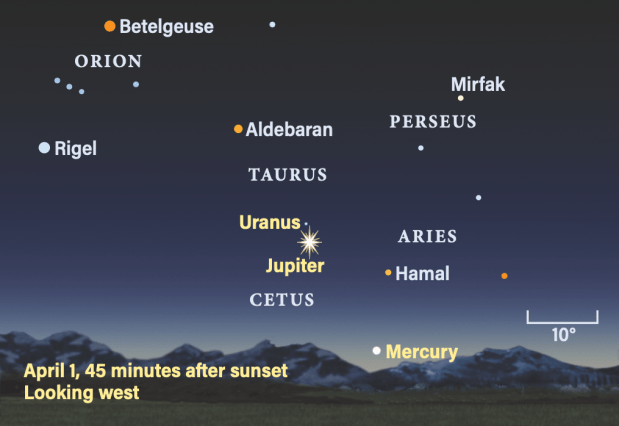
Monday, April 1
Mercury kicks off April by standing stationary at 4 P.M. EDT before beginning to move westward, or retrograde. This doesn’t last long — the planet will again reach a stationary point April 24, after which it will trace out a prograde (eastward) path in the sky once more.
You’ll find the solar system’s smallest planet in the evening sky, about 5° high 45 minutes after sunset, as twilight is falling and the brightest stars are just starting to come out. Mercury glows at magnitude 1.3 — tomorrow it will be 0.3 magnitude fainter, as well as 1° lower in the sky at the same time. Through a telescope, the planet spans some 10″ but shows off only a crescent face about 14 percent lit.
To Mercury’s upper right is brighter Jupiter — the gas giant is magnitude –2.1 and 34″ wide through your eyepiece. Early in the evening, those in the eastern half of the country may be able to catch a transit of Ganymede across the planet’s south polar regions. The event is just about to start or underway at sunset in the Eastern and Central time zones. Once the moon finishes its transit, slipping off the western limb of Jupiter around 9:25 P.M. EST, all four Galilean moons will lie west of the planet. From nearest to farthest they are Ganymede, Io, Europa, and Callisto.
The ice giant Uranus is some 3.3° farther east along the ecliptic from Jupiter, though the magnitude 5.9 world will need a telescope to show its 3″-wide disk.
Last Quarter Moon occurs late tonight at 11:15 P.M. EDT.
Sunrise: 6:43 A.M.
Sunset: 7:25 P.M.
Moonrise: 2:17 A.M.
Moonset: 10:58 A.M.
Moon Phase: Waning gibbous (55%)
Tuesday, April 2
Early risers will see the familiar W-shaped constellation Cassiopeia with the letter sitting right-side up low in the north about two hours before dawn.
Eta (η) Cassiopeiae is a magnitude 3.5 star that is not part of the W itself but sits about two-thirds of the way from Navi (Gamma [γ] Cas), which forms the center peak in the W, to Shedar (Alpha [α] Cas), which forms the rightmost low point in the letter. Turn your telescope on Eta, though, and you’ll discover a beautiful pair of red and yellow stars, separated by about 13″. They look particularly good at magnifications of about 100x.
Also called Achird, Eta Cas has a total magnitude of 3.4, though when split, it becomes a brighter, 3rd-magnitude yellow-white star, alongside an orangey-red magnitude 7.5 companion. Because of their brightness difference, the two stars’ colors contrast particularly well. The brighter star is just a touch more massive than our Sun at 1.1 solar masses, while the fainter companion is less than half as massive, about 0.4 solar masses. The two stars have a long orbit, circling each other every 480 years.
Because Cassiopeia is a circumpolar constellation that traces a circle in the northern sky around Polaris, you actually don’t have to be an early riser to catch this pair. The constellation is visible most or all of the night from many northern latitudes, though note the W shape won’t always be right-side up — it may appear sideways or even upside-down, looking more like an M.
Sunrise: 6:41 A.M.
Sunset: 7:26 P.M.
Moonrise: 3:12 A.M.
Moonset: 12:04 P.M.
Moon Phase: Waning crescent (44%)
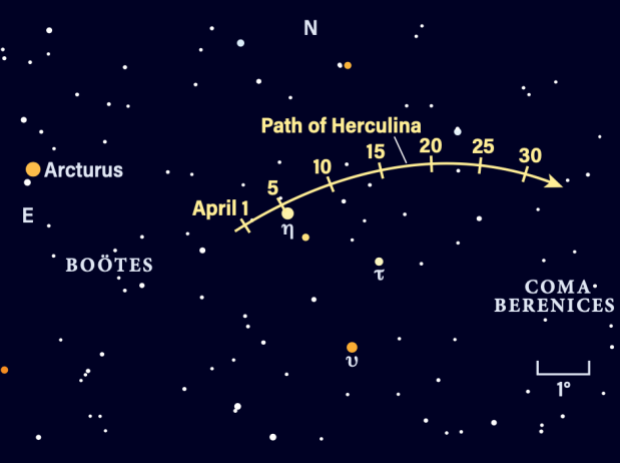
Wednesday, April 3
Asteroid 532 Herculina is making its way through Boötes the Herdsman this month. It is now just west of the bright star Arcturus and approaching magnitude 2.7 Eta Boötis, which it will pass closely on the 5th.
Boötes lies some 30° high in the eastern sky around 10 P.M. local daylight time tonight. You can find magnitude –0.1 Arcturus by following the arc of the Big Dipper’s handle, jumping off from the last star (Alkaid) and continuing the curve until you run into the next bright star along that path — Arcturus.
From Arcturus, skim about 4.5° due west to land on Herculina. Tonight the asteroid sits just 0.5° east of Eta. Over the next few nights, Herculina will draw closer to this star, passing due north of it on the 5th, so come back to this region for the next few days to chart its progress!
Sunrise: 6:40 A.M.
Sunset: 7:27 P.M.
Moonrise: 3:58 A.M.
Moonset: 1:18 P.M.
Moon Phase: Waning crescent (33%)
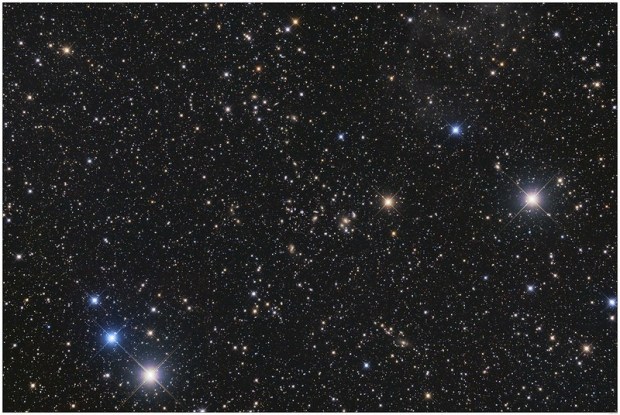
Thursday, April 4
Asteroid 2 Pallas is stationary at 3 P.M. EDT. Rising around 10 P.M. local daylight time this evening, you’ll find Pallas in the constellation Hercules. Glowing at 9th magnitude, Pallas is located 6° southeast of magnitude 2.8 Beta (β) Herculis, also called Kornephoros or Rutilicus. This star is about three times more massive than our Sun and glows a soft yellow.
The Strongman is also home to numerous deep-sky objects, including one of the sky’s showpiece globulars, M13. Hercules also contains the eponymous Hercules galaxy cluster, located about 1° northwest of 5th-magnitude Kappa (κ) Herculis. The cluster comprises hundreds of galaxies and most amateur instruments can pick up dozens of these, many of which are spirals. The larger your scope, the more galaxies you’ll pick up; alternatively, astrophotographers can stack exposures to bring out ever-fainter members of this impressive galaxy cluster.
Sunrise: 6:38 A.M.
Sunset: 7:28 P.M.
Moonrise: 4:36 A.M.
Moonset: 2:35 P.M.
Moon Phase: Waning crescent (23%)
Friday, April 5
The Moon passes 2° south of Mars at midnight EDT, though neither is visible at that time. Instead, check out the lead-up to the event in the pre-dawn sky this morning, as the Moon and Mars lie near the eastern horizon an hour before sunrise, slowly rising as twilight begins to brighten the sky. Mars is still magnitude 1.1 and sits to the lower left of the Moon, farther east along the ecliptic than our satellite. The two are currently separated by roughly 11°; considering they will close to 2° by midnight, you can see just how quickly the Moon appears to move across our sky each day!
About 30 minutes before sunrise, the pair is 8° high. Saturn, also still roughly the same magnitude as Mars, now lies just over 3.5° east of Mars, slightly closer to the horizon. Through a telescope, Mars’ disk appears 5″ across and is 95 percent lit. Compare that to mighty Saturn, which stretches 16″ — not including the rings, which roughly double that — and is fully illuminated.
The Moon, well on its way toward New as we gear up for next week’s solar eclipse, is just 16 percent lit this morning, with only its western limb illuminated. See if you can spot any earthshine lighting up the rest of the lunar landscape — this occurs when sunlight bounces off Earth to brighten the portions of the Moon that lie in Earth’s shadow.
Sunrise: 6:36 A.M.
Sunset: 7:29 P.M.
Moonrise: 5:08 A.M.
Moonset: 3:54 P.M.
Moon Phase: Waning crescent (13%)

Sky This Week is brought to you in part by Celestron.


